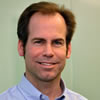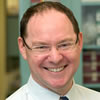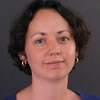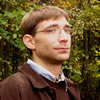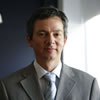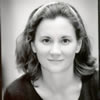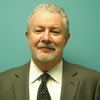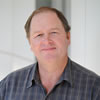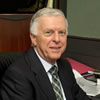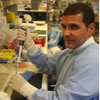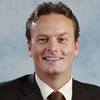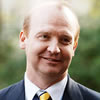Speakers' Profiles
Prof Dennis E. Discher
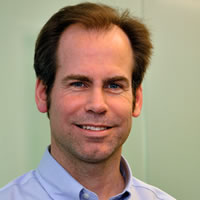 Dennis E. Discher is Professor at the University of Pennsylvania in the School of Engineering and Applied Science and in Graduate Groups in Cell & Molecular Biology and Physics. He received a Ph.D. from the University of California, Berkeley in 1993 for studies in cell and molecular biophysics, and was a US National Science Foundation International Fellow at the University of British Columbia until 1996.
Dennis E. Discher is Professor at the University of Pennsylvania in the School of Engineering and Applied Science and in Graduate Groups in Cell & Molecular Biology and Physics. He received a Ph.D. from the University of California, Berkeley in 1993 for studies in cell and molecular biophysics, and was a US National Science Foundation International Fellow at the University of British Columbia until 1996.
He has coauthored more than 150 publications with over 7000 citations that range in topic from matrix effects on stem cells and biochemical physics of protein folding to self-assembling polymers applied to disease, with papers appearing in Cell, Science, Journal of Cell Biology, Nature Materials, and Nature Physics. Honors and Service include a Presidential Early Career Award for Scientists and Engineers from the US- National Science Foundation, the Friedrich Wilhelm Bessel Award from the Humboldt Foundation of Germany, and membership on the editorial board for Science.
Prof John E. J. RASKO
BSc (Med), MBBS (Hons), PhD, MAICD, FRCPA, FRACP
.jpg) Professor Rasko is a Haematologist who directs Cell and Molecular Therapies at Royal Prince Alfred Hospital and heads the Gene and Stem Cell Therapy Program at the Centenary Institute, University of Sydney. His was the first formal appointment in clinical gene therapy in Australia.
Professor Rasko is a Haematologist who directs Cell and Molecular Therapies at Royal Prince Alfred Hospital and heads the Gene and Stem Cell Therapy Program at the Centenary Institute, University of Sydney. His was the first formal appointment in clinical gene therapy in Australia.
Professor Rasko is a past President of the Australasian Gene Therapy Society, Chairs the International Committee of the American Society of Gene and Cell Therapy and is Vice President of the International Society for Cellular Therapy. He is a member of the editorial boards of Pathology, Human Gene Therapy and The Journal of Gene Medicine. He serves on Hospital, philanthropic, state and national bodies including Chair of the Gene Technology Technical Advisory Committee of the federal Office of the Gene Technology Regulator.
Professor Rasko has a productive track record in gene therapy, experimental haematology and cell biology. His research has been successful in uncovering new mechanisms of leukemia, understanding blood hormones and their mechanisms of action, and clinical trials of new biological therapies for cancer and bleeding disorders. He has authored approximately 100 publications including a book published by Cambridge University Press on the ethics of inheritable genetic modification. In landmark papers in Nature Medicine in 2006 and 2007, with collaborators in the USA he reported the short-term clinical success and immunology of AAV-mediated liver-directed gene therapy for the treatment of haemophilia.
Celeste M. Nelson
 Assistant Professor of Chemical & Biological Engineering, Princeton University
Assistant Professor of Chemical & Biological Engineering, Princeton University
Dr. Celeste Nelson did her PhD in Biomedical Engineering at the Johns Hopkins University School of Medicine, studying intercellular-mediated mechanotransduction. She joined the Chemical & Biological Engineering department at Princeton University in 2007 after completing postdoctoral research with Mina Bissell at Lawrence Berkeley National Laboratory, where she worked on mammary branching morphogenesis. Dr. Nelson’s group is highly interdisciplinary and focuses on pattern formation during normal and abnormal development of the mammary gland and lung.
A/Prof Heiko Methe
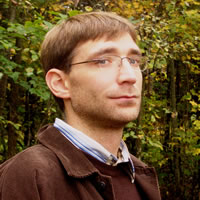 Heiko Methe is currently an interventional cardiologist at the University Hospital Grosshadern and Associate Professor at the School of Medicine, Ludwig-Maximilians-University in Munich, Germany. In 1998 he obtained his medical degree at the Georg-August University Göttingen, Germany. After a post-doctoral research sabbatical at The Scripps Research Institute in LaJolla, California he spent 2.5 years at the Harvard-MIT Biomedical Engineering Center at the Massachusetts Institute of Technology, Cambridge, Massachusetts.
Heiko Methe is currently an interventional cardiologist at the University Hospital Grosshadern and Associate Professor at the School of Medicine, Ludwig-Maximilians-University in Munich, Germany. In 1998 he obtained his medical degree at the Georg-August University Göttingen, Germany. After a post-doctoral research sabbatical at The Scripps Research Institute in LaJolla, California he spent 2.5 years at the Harvard-MIT Biomedical Engineering Center at the Massachusetts Institute of Technology, Cambridge, Massachusetts.
His research focus is on the potential of endothelial tissue engineered constructs to influence vascular repair processes without endangering a host immune response. Heiko Methe currently is a research affiliate with the Biomedical Engineering Center. After returning to Munich he is now involved in both clinical practice and laboratory research. Heiko Methe received the Daniel Steinberg New Investigator Award in Arteriosclerosis/Lipoproteins by the American Heart Association.
Prof Gordana Vunjak-Novakovic
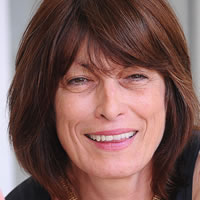 Gordana Vunjak-Novakovic is a Professor of Biomedical Engineering at Columbia University, where she directs the Laboratory for Stem Cells and Tissue Engineering, the Bioreactor Core of the NIH Tissue Engineering Resource Center, and the Stem Cell Imaging Core. Her lab is working on engineering of human tissues, for use in regenerative medicine and stem cell research. Gordana published 2 books, 45 book chapters, 210 peer-reviewed articles and 34 patents.
Gordana Vunjak-Novakovic is a Professor of Biomedical Engineering at Columbia University, where she directs the Laboratory for Stem Cells and Tissue Engineering, the Bioreactor Core of the NIH Tissue Engineering Resource Center, and the Stem Cell Imaging Core. Her lab is working on engineering of human tissues, for use in regenerative medicine and stem cell research. Gordana published 2 books, 45 book chapters, 210 peer-reviewed articles and 34 patents.
She is a frequent advisor to governmental organizations on tissue engineering and regenerative medicine, and the chair of her NIH study section. In 2002, she was elected a Fellow of the American Institute for Medical and Biological Engineering. In 2007, she gave the Director’ lecture at the NIH, as the first woman engineer to receive this distinction.
In 2008, she was inducted into the Women in Technology International Hall of Fame "for developing biological substitutes to restore, maintain or improve tissue function". In 2009, she was elected to the New York Academy of Sciences. In 2010, she received the Clemson Award of the Biomaterials Society “for contributions to literature”. Her talk is on engineering human tissues (such as heart and bone), by an integrated use of biomaterial scaffolds and bioreactors.
Professor Jürgen Götz
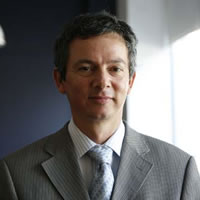 Professor Jürgen Götz is an internationally renowned expert in transgenic mouse models of Alzheimer’s disease (AD). He generated the first tau transgenic mouse model with an early AD phenotype (EMBO J 1995).
Professor Jürgen Götz is an internationally renowned expert in transgenic mouse models of Alzheimer’s disease (AD). He generated the first tau transgenic mouse model with an early AD phenotype (EMBO J 1995).
Together with Dr. Hutton, he published the first mouse model with NFT formation (JBC 2001a). He provided long-sought evidence for the amyloid cascade hypothesis by combining a transgenic and a transplantation approach (Science 2001). This highly cited work was accompanied by an Editorial in the same issue of Science, and selected as 2001 Milestone Paper by the Alzheimer Research Forum (alzforum.org).
Jürgen Götz further provided a role for FGF5 in the hair growth cycle (Cell 1994), worked on prions (Cell 1998), and showed that the catalytic subunit of PP2A is essential for development (PNAS 1998) and that PP2A is a key enzyme in tau phosphorylation (JBC 2001b, AmJPathol 2003). He established the first in vitro model of Aß-induced tau filament formation (JBC 2003). Using transcriptomics and proteomics he provided evidence for mitochondrial dysfunction and a role for glyoxalase I in AD (PNAS 2003, JBC 2005, Proteomics 2006, PNAS 2009). His review articles are highly cited (e.g., BRR 2001, MolPsych 2004, NatRevNeurosci 2008).
Jürgen Götz has been a continuous member of the GRP (Grant Review Panel) of the NHMRC since arriving in Australia in 2005, and a Chair in 2009.In 2005, Jürgen Götz received the BioFirst (NSW) award; and in 2009 he was awarded NSW Scientist of the Year (Category: Biomedical Sciences).
Current research: Jürgen Götz continues to develop new transgenic animal models and to work on pathological functions of tau, with a focus on tau-targeted treatment approaches and on understanding how tau mediates Abeta toxicity. Another major interest is the commonality of type 2 diabetes and AD and what determines selective vulnerability in AD. In addition to primary neuronal cultures, C. elegans has been established as a model organism in the laboratory.
Recent publications: Rhein V et al (2009) Aß and tau synergistically impair the oxidative phosphorylation system in triple transgenic Alzheimer’s disease mice, PNAS 106: 20057 [Highlighted in Nat Rev Neurosci Jan 2010] • Ittner LM et al (2008) Parkinsonism and impaired axonal transport in a mouse model of frontotemporal dementia, PNAS 105: 15997 • Götz J & Ittner LM (2008) Animal models of Alzheimer’s disease and frontotemporal dementia, Nat Rev Neurosci 9: 532 • Habicht G et al (2007) Directed selection of a conformational antibody domain that prevents mature amyloid fibril formation by stabilizing Aß protofibrils, PNAS, 104: • Ittner LM et al. (2010) Dendritic Function of Tau Mediates Amyloid-ß Toxicity in Alzheimer's Disease Mouse Models, Cell, in press
Prof Laura Niklason
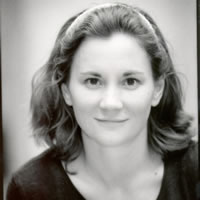 Dr. Niklason is a Professor at Yale University in Biomedical Engineering and Anesthesia, and also serves as Vice-Chair for Anesthesia at Yale. She received her PhD in Biophysics from the University of Chicago in 1988, and her MD from the University of Michigan in 1991. She completed her residency training in anesthesia and intensive care unit medicine at the Massachusetts General Hospital in Boston, and completed post-doctoral scientific training at Massachusetts Institute of Technology. From there she went onto a faculty position at Duke University, where she remained from 1998-2005.
Dr. Niklason is a Professor at Yale University in Biomedical Engineering and Anesthesia, and also serves as Vice-Chair for Anesthesia at Yale. She received her PhD in Biophysics from the University of Chicago in 1988, and her MD from the University of Michigan in 1991. She completed her residency training in anesthesia and intensive care unit medicine at the Massachusetts General Hospital in Boston, and completed post-doctoral scientific training at Massachusetts Institute of Technology. From there she went onto a faculty position at Duke University, where she remained from 1998-2005.
During that time, Dr. Niklason founded a biotechnology company (“Humacyte, Inc.”), which is working to bring engineered tissue replacements to patients. In 2006, Niklason moved to Yale University, where she continues to teach, maintain a vigorous scientific laboratory, and works to expand novel cellular therapies.
During her scientific career, Dr. Niklason has become recognized as one of the world’s leading experts in cellular therapies and regenerative medicine. She has become a world-leader in the development of engineered blood vessels for implantation, and other cellular therapies.
Dr. Niklason’s research focuses primarily on regenerative strategies for cardiovascular tissues, and the impact of biomechanical and biochemical signals of tissue differentiation and development. Niklason speaks nationally and internationally on her research, and has received numerous national awards for scientific excellence, and was named one of only 19 “Innovators for the Next Century” by US News and World Report in 2001.
Dr Ross Garrett
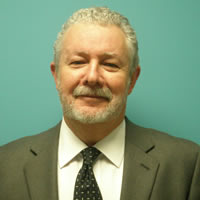 Dr. Garrett was born and raised in Sydney, Australia but moved to Adelaide, Australia in 1969 and attended the University of Adelaide there. He obtained a degree in Biochemistry and Organic Chemistry from the University of Adelaide and a Graduate Diploma in Medical Technology from the South Australian Institute of Technology. In 1979 he was employed by the Institute of Medical and Veterinary Science in the Tissue Pathology Department studying the host response to prosthetic wear debris. He then earned his Ph.D. from the University of Adelaide studying metal containing anti-inflammatory drugs.
Dr. Garrett was born and raised in Sydney, Australia but moved to Adelaide, Australia in 1969 and attended the University of Adelaide there. He obtained a degree in Biochemistry and Organic Chemistry from the University of Adelaide and a Graduate Diploma in Medical Technology from the South Australian Institute of Technology. In 1979 he was employed by the Institute of Medical and Veterinary Science in the Tissue Pathology Department studying the host response to prosthetic wear debris. He then earned his Ph.D. from the University of Adelaide studying metal containing anti-inflammatory drugs.
In 1985 he moved to San Antonio to the University of Texas Science Center at San Antonio to do a Ph.D. fellowship with Dr. Gregory Mundy in bone and cartilage metabolism and then in 1988 joined OsteoSA at its inception. At OsteoSA he was responsible for the identification of bone growth peptides, which would stimulate bone formation.
In 1982 he joined OsteoScreen and in 2001 was made Scientific Director responsible for developing novel assays and approaches for determining the effects of drugs on bone formation.
In 2007 he joined Zimmer as Director of Bone and Drug Device at Zimmer Orthobiologics in Austin Texas. In 2010 he was promoted to Senior Director at Zimmer Orthobiologics.
Dr. Garrett has over 22 years of experience in the area of cell biology and animal models of disease particularly in the field of bone and cartilage research and is adept at identifying novel drugs that work with disease states involving these tissues.
Professor Stephen Hunyor
 Stephen Hunyor is a Cardiologist, Professor of Medicine and Director of the Cardiac Technology Centre in the Kolling Institute, University of Sydney at Royal North Shore Hospital.
Stephen Hunyor is a Cardiologist, Professor of Medicine and Director of the Cardiac Technology Centre in the Kolling Institute, University of Sydney at Royal North Shore Hospital.
His principal interest has been in translational research, studying heart damage and repair with a focus on heart failure and its treatment with devices and more recently cellular therapy. His group specialises in “whole heart” response in terms of hemodynamics and cardiac mechanics and energetics. He was Director of the Cooperative Research Centre (CRC) for Cardiac Technology (1992-99) which had a major program in Polymer research and which involved highly effective collaboration between hospitals, Universities, CSIRO and industry.
Professor Hunyor was co-Founder of the North Shore Heart Research Foundation, and a Member of Scientific/Research Advisory Committees to that Foundation and to the Heart Research Institute - Sydney (2007- ), NHMRC Project Grants Review Panel Member (2006- ) and Founder and former Chairman (2005-2007) Heart Assist Technologies Pty Ltd – a “start-up” company to develop a unique implantable heart assist device. He advised government on R&D policy; was Chair of Australia’s 1st “Commercializing Health Innovations Forum” (CHIF ’97), and established the Intellectual Property Unit within the NSW State Health Department. He has published > 180 papers, edited 4 books, and is co-inventor of 4 Patents (USA, China, Australia, Hungary, Canada).
Associate Professor Nick Di Girolamo
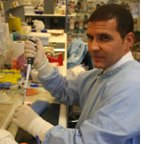 Associate Professor Nick Di Girolamo is the Director of the Ocular Diseases Research Unit at the University of New South Wales, Australia.He is a Science graduate from the University of Sydney with over 20-years experience in ocular disease that completed his PhD on the “Mechanisms of Tissue Destruction in Inflammatory Eye Disease” in 1998.
Associate Professor Nick Di Girolamo is the Director of the Ocular Diseases Research Unit at the University of New South Wales, Australia.He is a Science graduate from the University of Sydney with over 20-years experience in ocular disease that completed his PhD on the “Mechanisms of Tissue Destruction in Inflammatory Eye Disease” in 1998.
His research interests include anterior segment disorders including, uveitis, pterygia, ocular surface neoplasia, and limbal stem cell deficiency (LSCD). He has published over 60 articles in peer reviewed medical journals and has attracted over $3M in funds to support his research program. He is on the editorial board of the Journal of Biomedicine and Biotechnology, a panel member that reviews grants for the National Health & Medical Research Council of Australia and reviewer of manuscripts for over 30 medical journals.
He has a national and international reputation for his knowledge and expertise in matrix metalloproteinase and stem cell biology and was recently awarded ‘Inventor of the Year’ in 2009 by the ABCs New Inventors for developing a novel technique to treat partially blind patients with insufficient corneal stem cells.
Professor Ian E. Alexander
Professor in Paediatrics and Molecular Medicine
BMedSci, MBBS (Hons), PhD, FRACP (paeds), HGSA certified clinical geneticist
 Professor Alexander is head of the Gene Therapy Research Unit, a joint initiative of the The Children’s Hospital at Westmead and Children’s Medical Research Institute in Sydney. Within the hospital he also holds appointments as a senior staff specialist and Director of laboratory research.
Professor Alexander is head of the Gene Therapy Research Unit, a joint initiative of the The Children’s Hospital at Westmead and Children’s Medical Research Institute in Sydney. Within the hospital he also holds appointments as a senior staff specialist and Director of laboratory research.
His training and day-to-day activities in both clinical medicine and laboratory research reflect his interest in translating research progress into improved health outcomes for children. After completing specialty training in paediatrics at Prince of Wales Children’s Hospital he obtained a PhD in Molecular Biology from the Garvan Institute in Sydney before completing clinical genetics training at the Murdoch Institute in Melbourne. He then undertook postdoctoral studies at the Fred Hutchinson Cancer Research Institute in Seattle before returning to Australia to take up his current position. He has since established a translational research program and developed the specialised infrastructure and skill sets required to take promising novel therapies through to clinical application.
His specific expertise and interests include virus-mediated gene transfer with a focus on organs including the liver and bone marrow, both of which have immense promise as targets for the treatment genetic disease in children. His team became the first in Australia to treat a genetic disease (SCID-X1) by gene therapy and are recognised leaders in the establishment of this exciting field in Australia. This is evidenced by his election as the inaugural president of the Australasian Gene Therapy Society in 2001, his recent award of Life membership of the Society and his appointment in 2007 as Chair of the NHMRC Cellular Therapies Advisory Committee.
He was also recently appointed to the position of Professor in Paediatrics and Molecular Medicine at the University of Sydney.
International recognition includes membership of the gene therapy sub-committee of the International Society for Cellular Therapy, Associate Editorship on the Journal of Gene Medicine and membership of the editorial board of Human Gene Therapy.
Professor Peter K M Maitz, AM MD
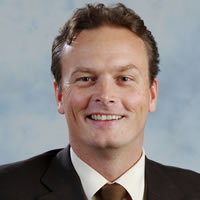 In 2008 a Chair of Burn Injury and Reconstructive Surgery has been created at the University of Sydney and Peter Maitz is the inaugural Professor.
In 2008 a Chair of Burn Injury and Reconstructive Surgery has been created at the University of Sydney and Peter Maitz is the inaugural Professor.
Professor Maitz is Medical Director of the Burns Unit at Concord Hospital a teaching hospital of the University of Sydney since 2000.
Prof. Maitz is a Plastic Surgeon trained at the University of Vienna/Austria and Harvard University Boston/USA and was awarded the Order of Australia in 2002 for his services to the Bali victims.
Prof. Maitz designed and commissioned the Burns Unit at Concord Hospital, which offers state of the art equipment and techniques for the care of burned patients. His clinical work includes all areas of burn surgery with special interest in burn reconstruction especially in the head and neck area.
In addition to his clinical work Prof. Maitz established the tissue culturing laboratory at Concord Hospital, which supplies cultured skin substitutes to all patients in NSW and serves as a research basis. Main research areas include skin substitutes, cell technology and microsurgery.
Prof. Maitz is the Chairman of the Education Committee of ANZBA and is heavily involved in teaching. The Emergency Management of Severe Burns course (EMSB) is now being administered under Prof Maitz’s leadership in Australia, New Zealand, England, Holland, South Africa, Papua New Guinea, and Bangladesh. Prof. Maitz published extensively in peer reviewed journals and is member of numerous surgical societies worldwide.
Professor Rutledge Ellis-Behnke
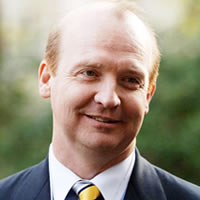 Rutledge Ellis-Behnke is a Professor at Heidelberg University Mannheim Faculty of Medicine where he is the Director of the Nanomedicine Translational Think Tank. In addition, he is a Research Affiliate in the Brain and Cognitive Sciences department at the Massachusetts Institute of Technology. Previously he was Associate Director of the Technology Transfer Office and Associate Professor in the Faculty of Medicine at the University of Hong Kong. His primary research interest is using nanotechnology to reconnect the disconnected parts of the brain in order to restore function.
Rutledge Ellis-Behnke is a Professor at Heidelberg University Mannheim Faculty of Medicine where he is the Director of the Nanomedicine Translational Think Tank. In addition, he is a Research Affiliate in the Brain and Cognitive Sciences department at the Massachusetts Institute of Technology. Previously he was Associate Director of the Technology Transfer Office and Associate Professor in the Faculty of Medicine at the University of Hong Kong. His primary research interest is using nanotechnology to reconnect the disconnected parts of the brain in order to restore function.
Ellis-Behnke received his PhD from MIT in Neuroscience, BSci from Rutgers University and graduated from Harvard Business School’s International Senior Manager’s Program (AMP/ISMP).
Prior to returning to school to pursue his PhD, Ellis-Behnke held various management positions including Senior Vice President of Huntingdon, a public company for testing and consulting services and Co-founder/CEO in 1995 of one of the first internet companies to do online commerce.
Ellis-Behnke is Associate Editor/Neurology for the journal Nanomedicine: Nanotechnology, Biology and Medicine; member of both the Executive and Scientific Advisory Boards for the Glaucoma Foundation; member of the Executive Board of the Asia Foundation for Cancer Research; member of the China Spinal Cord Clinical Trial Network, Society for Neuroscience, American Chemical Society, Association for Research in Vision and Ophthalmology and Sigma Xi, the scientific research society.
Technology Review named his “Nanohealing” discoveries one of the “Top 10 Emerging Technologies of 2007.” His “Nano Neuro Knitting” and “Immediate Hemostasis” technologies have each been licensed for translation to humans.
In addition to his work in neuroscience and nanomedicine Ellis-Behnke introduced the TabletPC to MIT and the University of Hong Kong as part of the migration to the paperless classroom to deliver all course material and texts to the students digitally.
